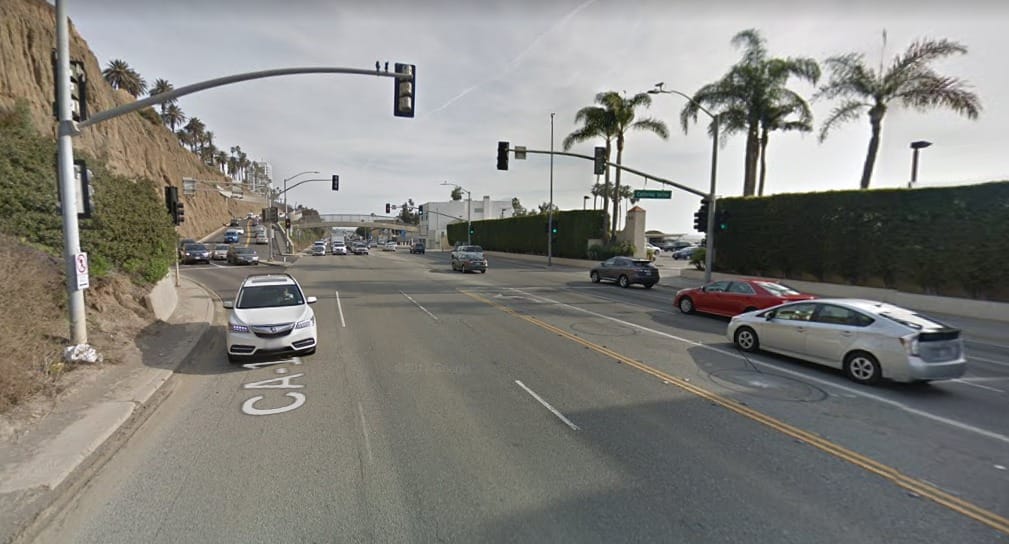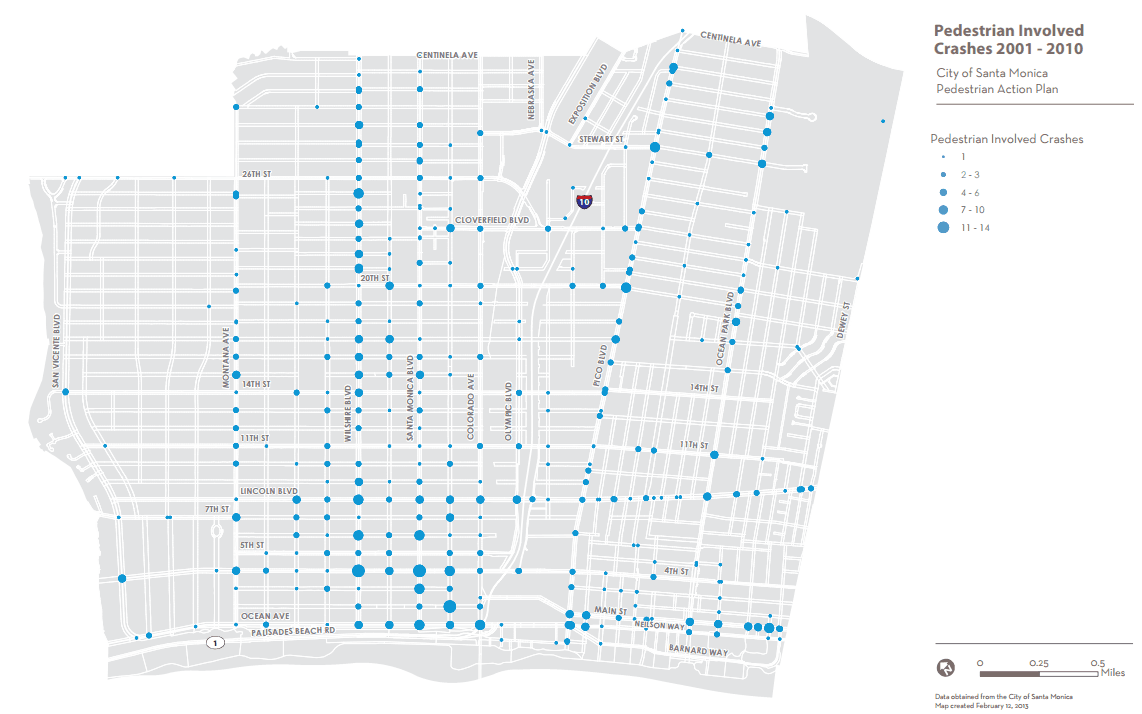
Early Tuesday morning, another person was killed in a traffic incident on Pacific Coast Highway, bringing the number of people killed in traffic incidents in Santa Monica in 2017 to eight.
According to the Daily News, a pedestrian was struck around 5:20 a.m. near the California Incline and died at the scene of the crash. Other details remain scant as of publication.
Last month, a 23-year-old man, Kazumasa Nozaki, was killed riding his bike northbound on PCH around 7 p.m. when a driver hit him from behind. Witnesses contested the original report that the driver returned to the scene willingly and police have since said they were “looking at possible negligence and fleeing the scene of the accident.”
Following Nozaki’s death, Santa Monica Next looked into where the city was in terms of implementing its “Vision Zero” policy, which the city adopted as part of its Pedestrian Action Plan, meaning that the city committed itself to reducing serious traffic-related injuries and deaths to zero.

The Pacific Coast Highway is a particularly dangerous stretch of road, but it is not unique in being the site of traffic deaths in the city of Santa Monica. This year alone, someone was killed while crossing Lincoln Boulevard, another person was killed crossing Santa Monica Boulevard, and a man was killed when a driver slammed into him in the Civic Center parking lot.
The issue of “Vision Zero” will be back before the Council in December, according to city officials.
“Since going to Council, staff has been working on development of a two-year Vision Zero Action Plan to identify initial locations of focus for countermeasures, and to guide city-wide coordination among departments on actions to reduce severe and fatal injury collisions. The plan is scheduled to go to Council in December 2017,” Francie Stefan, the city’s mobility manager, wrote in an email to Santa Monica Next last month.
“Given the importance of the issue, we wanted to carefully craft strategies to get to the 2026 target date in the Pedestrian Action Plan. That was the idea behind creating an initial two-year Action Plan from which we can evaluate the reach and impact of interventions and programs, and use that data to inform next steps in the years to come,” she wrote.
In her email, Stefan listed a number “immediate actions” the city is taking:
- Striping plans for the scramble crossings at 2nd/Santa Monica Blvd., 2nd/Broadway, 4th/Santa Monica Blvd. and 4th/Broadway
- Implementation of Lead Pedestrian Intervals at a number of locations citywide
- Design for a protected cycle track on Ocean Avenue consistent with the adopted Downtown Community Plan
- Completion of revisions to the Samohi access improvements on Michigan/7th
- Plans and implementation of 15 mph speed signs around JAMS, Will Rogers, Roosevelt and Lincoln schools
- Procurement for Construction Documents for the four Lincoln Neighborhood Corridor pedestrian crossings
- On-going outreach and education through National Night Out, Mayor’s Rides/Walks, Fall Festival, Kidical Mass, and Bike It Walk It as part of Safe Routes to School
- COAST Street Festival and pop-up cycle track on Ocean Avenue, Mobility Hub.
- Implemented three intersection treatments for cyclists including two “bike box” intersections
- Procurement for design of sidewalks on Olympic Boulevard between Stewart and 26th Streets, and for protected bike facilities on Stewart between I-10 and Colorado Avenue
- Obtained grant funding to pilot a Safe Routes for Senior program
- Currently applying for grant funds to evaluate Wilshire Boulevard potential countermeasures, and do public outreach
- Currently working on concept design for 17th street protected bikeway and outreach
- Completed initial internal draft designs for Beach Path extension north of Pier
But at past meetings on the issue, staff has noted that change will take political will.
At a May 9 study session, staff noted one of the underlying tensions.
“There are vocal advocates for each mode of transportation (including, especially, the automobile),” the May 9 staff report reads. “Remaking the street network to equalize access and promote shared usage and safety requires not only substantial financial commitment, but equally substantial commitment to ongoing management, public engagement and education — as well as the political will to take the long view of change in the face of vigorous defense of the status quo when it comes to street design, parking policy and traffic enforcement.”
